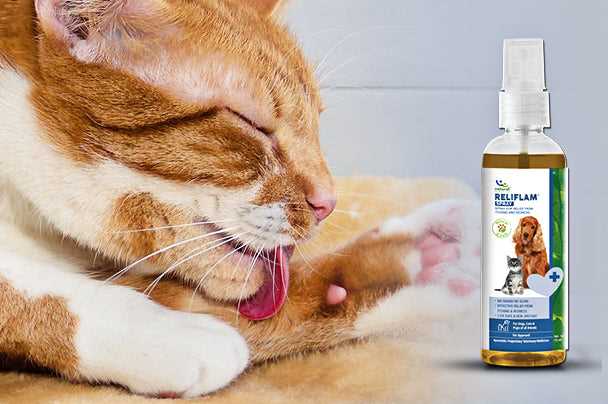Start by maintaining a clean environment. Frequent vacuuming and dusting can significantly reduce airborne particles that trigger reactions. Use a vacuum with a HEPA filter to capture fine allergens effectively.
Implement air purifiers equipped with HEPA filters in rooms where you and your furry friend spend the most time. These devices can help filter out dander and other irritants, improving the overall air quality.
Establish a designated area for your companion, limiting their access to certain rooms, especially bedrooms. This can help create a safe zone free from potential triggers.
Regular grooming is key. Brush your feline buddy frequently to minimize loose hair and dander around the house. Consider using a damp cloth to wipe down your pet’s fur, which can help remove allergens before they disperse into the air.
Invest in hypoallergenic bedding and furniture covers. Wash these items regularly in hot water to eliminate accumulated irritants. Creating a more allergen-free sleeping space can promote better rest and comfort.
Stay hydrated and maintain a healthy diet. Proper nutrition and hydration can enhance your immune system, potentially reducing sensitivity to irritants over time.
Managing Sensitivities with Feline Companions
Regular grooming reduces dander. I enjoy my brushing sessions, and they help keep allergens at bay. My human uses a high-quality brush to minimize shedding and collects loose fur efficiently.
Implementing air purifiers with HEPA filters significantly enhances indoor air quality. These devices capture tiny particles, including those pesky proteins that trigger discomfort.
Cleaning surfaces frequently is crucial. My human vacuums carpets and upholstery with a vacuum equipped with a HEPA filter. They also wipe down furniture and wash my bedding regularly to cut down on irritants.
Designating specific areas in the living space can be beneficial. Creating a cat-free zone, such as the bedroom, can provide a sanctuary for those who experience reactions.
Choosing the right cleaning products matters. Opting for unscented and hypoallergenic options helps reduce potential triggers lurking in household cleaners.
Bathing me occasionally can help lower allergenic particles. My human uses a gentle, pet-safe shampoo to ensure I remain comfortable during the process.
A healthy diet for me contributes to a strong immune system. My human provides high-quality food rich in omega fatty acids, which may help reduce inflammation and skin irritation.
Lastly, keeping my litter box clean is vital. Regular scooping and using low-dust litter can minimize airborne particles that might cause reactions.
Identifying Symptoms of Cat Allergies
When my human sneezes or rubs their eyes after spending time with me, it often means they’re experiencing symptoms. Common indicators include nasal congestion, itchy or watery eyes, and frequent sneezing. Sometimes, they complain about a scratchy throat or cough, especially during cuddle sessions.
Skin reactions can also occur. Red, itchy patches or rashes may appear, particularly where their skin comes into contact with my fur. If they notice these signs, it’s a clear signal that my presence might be causing discomfort.
In more severe cases, my human might develop breathing difficulties. Wheezing, shortness of breath, or a tight feeling in the chest can occur, which is a serious concern. If they experience these symptoms, it’s important to seek advice from a healthcare professional.
Monitoring these reactions after different interactions with me can help pinpoint specific triggers. Keeping a diary of symptoms and activities can be useful for understanding what brings on these responses.
Cleaning Your Space to Reduce Allergens
Regular cleaning routines are key to minimizing irritants. Here are steps I recommend:
- Vacuum Frequently: Use a vacuum with a HEPA filter to capture small particles. Aim for at least twice a week, focusing on carpets, rugs, and upholstered furniture.
- Wash Bedding: Clean any bedding, blankets, and cushions weekly in hot water to eliminate dander. Consider using allergen-proof covers for added protection.
- Dust Surfaces: Utilize a damp cloth to wipe down surfaces, as dry dusting can stir up allergens. Don’t forget shelves, picture frames, and electronics.
- Clean Air Filters: Change HVAC filters regularly and consider using air purifiers with HEPA filters in commonly used areas.
- Control Humidity: Use dehumidifiers to maintain a humidity level below 50% to deter dust mites and mold growth.
- Regularly Groom Yourself: I recommend brushing myself often to reduce loose fur and dander in the environment. My human can help with this!
Implementing these strategies can significantly lower irritants in your surroundings. Keep your space clean, and everyone will feel more comfortable!
Choosing the Right Air Purifier for Allergies

Opt for a purifier equipped with a HEPA filter, which effectively traps tiny particles, including dander and pollen. Look for models that can handle your room size; the Clean Air Delivery Rate (CADR) should match or exceed the space area for optimal performance.
Ensure the device has a carbon filter as well to neutralize odors. Some units also feature UV light, which can further reduce airborne pathogens, contributing to cleaner air quality.
Consider noise levels. Some purifiers operate quietly, making them suitable for bedrooms or living areas. Read reviews to assess how well the unit performs in real-world settings.
Check maintenance requirements like filter replacement frequency, as more efficient models may have higher filter costs. A unit with washable filters can save money in the long run.
Lastly, look for energy-efficient options to minimize your electricity bill while keeping the air fresh and clear. Energy Star-rated models are a great choice for sustainability.
Implementing a Regular Grooming Routine for Your Feline Friend
Establishing a consistent grooming schedule is key to minimizing irritants. I recommend daily brushing to remove loose fur and dander, which can contribute to discomfort. Use a soft-bristle brush or a grooming glove, as these are gentle on the skin and effective in collecting hair.
| Grooming Frequency | Brush Type | Benefits |
|---|---|---|
| Daily | Soft-bristle brush | Reduces loose fur and dander |
| Every 2-3 days | Grooming glove | Gentle on skin, collects hair |
| Weekly | Flea comb | Removes pests, promotes skin health |
Bathing is another effective strategy, though it should be done sparingly–once every few months is sufficient. Use a hypoallergenic cat shampoo and ensure your pal is completely dry afterward. This helps minimize dander buildup.
Don’t forget to trim nails and clean ears regularly. A clean environment starts with a well-groomed companion. For more tips on maintaining a healthy space, check out this helpful resource on how to lower water hardness in fish tank.
Utilizing Over-the-Counter Allergy Medications
Antihistamines can be a quick solution for managing uncomfortable symptoms. Options like cetirizine or loratadine are commonly available and can help ease sneezing and itching. Always check the dosage based on your age and health condition.
Decongestants, such as pseudoephedrine, may also provide relief from nasal congestion. These can be useful if you’re feeling stuffy after spending time with your furry companion. Remember to consult a healthcare professional if you have any pre-existing conditions before using these medications.
In addition to pills, consider nasal sprays containing corticosteroids for targeted relief. These sprays can effectively reduce inflammation in the nasal passages, offering a more direct approach to managing symptoms.
Eye drops formulated for allergy relief can help reduce redness and itching in the eyes. Look for options that specifically mention allergy relief on the label.
Before starting any medication, it’s wise to read the instructions thoroughly and be aware of potential side effects. Keep an eye on how your body reacts, and if symptoms persist, consult a doctor for further guidance.
As a fun addition to your care routine, you might want to explore the best treats for cats teeth. They can help keep your smile bright while you manage those pesky symptoms!
Creating Allergen-Free Zones in Your Space

Establish areas in your territory that are off-limits to furry friends. Designate a room, preferably one with minimal foot traffic, where my human can relax without any of my dander or fur floating around.
Invest in high-quality door seals to prevent sneaky entrances. A solid door can keep the allergens contained, ensuring that the designated zone remains a breath of fresh air.
Utilize hard surfaces like tile or hardwood flooring in these spaces. Carpets tend to trap particles, making it harder to keep things clean. Regular sweeping and mopping will help maintain a pristine environment.
Consider incorporating washable curtains instead of heavy drapes. This allows for easy cleaning and reduces the buildup of allergens in the fabric.
Keep the air fresh by using air purifiers in these designated areas. Choose models equipped with HEPA filters, which trap tiny particles and improve air quality significantly.
Lastly, maintain a strict grooming routine for me outside of these zones. Regular brushing helps minimize the spread of loose fur and dander throughout your space.
FAQ:
What are some common symptoms of cat allergies?
Common symptoms of cat allergies include sneezing, runny or stuffy nose, itchy or watery eyes, coughing, and skin rashes. Some individuals may also experience asthma-like symptoms such as wheezing or shortness of breath. These reactions typically occur shortly after exposure to cats and can vary in severity depending on the individual’s sensitivity.
How can I reduce allergens in my home if I have a cat?
To minimize allergens at home, consider implementing several strategies. Regularly clean your home, focusing on areas where your cat spends time. Use a vacuum with a HEPA filter to capture dander and hair, and wash your cat’s bedding frequently. Additionally, you can use air purifiers with HEPA filters to help reduce airborne allergens. Designating cat-free zones, especially in bedrooms, can also be beneficial.
Are there any natural remedies for cat allergies?
Some people find relief from cat allergies through natural remedies. For instance, local honey is believed by some to help build immunity to pollen and may also assist with pet dander. Quercetin, a natural antihistamine found in certain foods, can also be beneficial. However, it is advisable to consult with a healthcare professional before trying new remedies to ensure they are safe and suitable for your situation.
Is it possible to live with a cat if I have allergies?
Yes, many individuals with cat allergies manage to live with cats successfully. It often requires a combination of strategies, such as frequent cleaning, minimizing direct contact, and possibly using allergy medications as needed. Some people also find that their allergies decrease over time as they become accustomed to the cat. It’s essential to monitor symptoms and consult with a doctor for tailored advice.
What medications can help alleviate cat allergy symptoms?
There are several medications available that can help alleviate symptoms of cat allergies. Antihistamines, available over-the-counter or by prescription, can reduce sneezing and itching. Nasal corticosteroids can help relieve nasal congestion and inflammation. In some cases, allergy shots (immunotherapy) may be recommended to desensitize your immune system to cat allergens. Always consult a healthcare provider before starting any medication for allergies.






